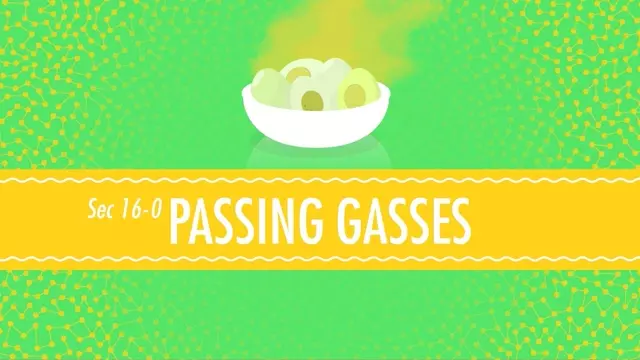2013-06-03
[public] 542K views, 7.48K likes, 85.0 dislikes audio only
We have learned over the past few weeks that gases have real-life constraints on how they move here in the non-ideal world. As with most things in chemistry (and also in life), how a gas moves is more complex than it seems at first. In this episode, Hank describes what it means when we talk about the velocity of a gas - to understand gas velocity, we have to know what factors affect it, and how. Hank also teaches you about effusion, diffusion, and concentration gradients, before showing off a cool experiment that physically demonstrates the things you have just learned. Sound exciting enough for you? Let's get started.
*Special Thanks to Matt Young at the University of Montana (Geosciences Department, Environmental Biogeochemistry Lab) who helped with the chemical demonstrations.*
Pssst... we made flashcards to help you review the content in this episode! Find them on the free Crash Course App!
Download it here for Apple Devices: https://apple.co/3d4eyZo
Download it here for Android Devices: https://bit.ly/2SrDulJ
Table of Contents
Net Velocity vs. Average Velocity 1:17
Effusion 4:47
Graham's Law 5:52
Diffusion 7:22
Concentration Gradients 7:08
Precipitation Reaction with Gases 8:21
Crash Course is on Patreon! You can support us directly by signing up at http://www.patreon.com/crashcourse
Want to find Crash Course elsewhere on the internet?
Facebook - http://www.facebook.com/YouTubeCrashCourse
Twitter - http://www.twitter.com/TheCrashCourse
Instagram - https://www.instagram.com/thecrashcourse/
CC Kids: http://www.youtube.com/crashcoursekids
http://www.patreon.com/crashcourse
http://www.patreon.com/crashcourse
/youtube/video/TLRZAFU_9Kg?t=0
/youtube/video/TLRZAFU_9Kg?t=77
/youtube/video/TLRZAFU_9Kg?t=106
/youtube/video/TLRZAFU_9Kg?t=149
/youtube/video/TLRZAFU_9Kg?t=188
/youtube/video/TLRZAFU_9Kg?t=262
/youtube/video/TLRZAFU_9Kg?t=296
/youtube/video/TLRZAFU_9Kg?t=333
/youtube/video/TLRZAFU_9Kg?t=434
/youtube/video/TLRZAFU_9Kg?t=446
/youtube/video/TLRZAFU_9Kg?t=501
/youtube/video/TLRZAFU_9Kg?t=532
/youtube/video/TLRZAFU_9Kg?t=562

